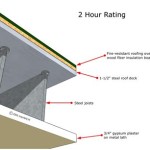Michelangelo Paintings Sistine Chapel Ceiling
Michelangelo's Sistine Chapel ceiling is one of the most iconic and awe-inspiring works of art in the world. The ceiling is a fresco, painted on wet plaster, and depicts scenes from the Book of Genesis. The work is a masterpiece of the High Renaissance, and its beauty and complexity have captivated visitors for centuries.
Michelangelo was commissioned to paint the Sistine Chapel ceiling by Pope Julius II in 1508. The project was a massive undertaking, and it took Michelangelo four years to complete. The ceiling covers an area of over 12,000 square feet, and it contains over 300 figures. The most famous scenes from the ceiling include The Creation of Adam, The Expulsion from Eden, and The Last Judgment.
Michelangelo's Sistine Chapel ceiling is a technical marvel. The artist used a variety of techniques to create the illusion of depth and space. He also used a number of different colors, which gives the ceiling a rich and vibrant appearance. The ceiling is also notable for its use of foreshortening, which makes the figures appear to be closer to the viewer than they actually are.
Michelangelo's Sistine Chapel ceiling has had a profound impact on art history. The work has been a source of inspiration for artists for centuries, and it continues to be studied and admired by people all over the world. The ceiling is a testament to Michelangelo's genius, and it is one of the most important works of art in the world.
The Creation of Adam
The Creation of Adam is one of the most famous scenes from Michelangelo's Sistine Chapel ceiling. The scene depicts the moment when God gives life to Adam, the first man. God is shown reaching out to Adam, who is lying on the ground. The scene is a powerful and moving depiction of the relationship between God and man.
The Expulsion from Eden
The Expulsion from Eden is another famous scene from Michelangelo's Sistine Chapel ceiling. The scene depicts the moment when Adam and Eve are expelled from the Garden of Eden after they have disobeyed God. Adam and Eve are shown walking away from the garden, with their heads bowed in shame. The scene is a reminder of the consequences of sin.
The Last Judgment
The Last Judgment is the largest scene on Michelangelo's Sistine Chapel ceiling. The scene depicts the moment when Christ judges the living and the dead. Christ is shown sitting on a throne, surrounded by the apostles. The righteous are shown being rewarded, while the wicked are shown being punished. The scene is a terrifying and awe-inspiring depiction of the end of the world.
Michelangelo's Sistine Chapel ceiling is a masterpiece of art that has captivated visitors for centuries. The ceiling is a testament to Michelangelo's genius, and it is one of the most important works of art in the world.

Smarthistory Ceiling Of The Sistine Chapel

Michelangelo S Sistine Chapel Ceiling World History Encyclopedia

Michelangelo Frescoed The Ceiling And Last Judgment

Sistine Chapel Ceiling Wikipedia

Michelangelo S Painting Of The Sistine Chapel Ceiling Italianrenaissance Org

Michelangelo S Sistine Ceiling Uncovering Its Message Kelly Bagdanov

Michelangelo S Painting Of The Sistine Chapel Ceiling Italianrenaissance Org

Michelangelo And The Sistine Chapel 10 Facts You May Not Know Colosseum Vatican Tours

Episode 85 Art Fact And Fiction Did Michelangelo Paint The Sistine Ceiling Alone On His Back S10e02 Artcurious

Michelangelo And The Sistine Chapel 10 Facts You May Not Know Journeys To Italy








